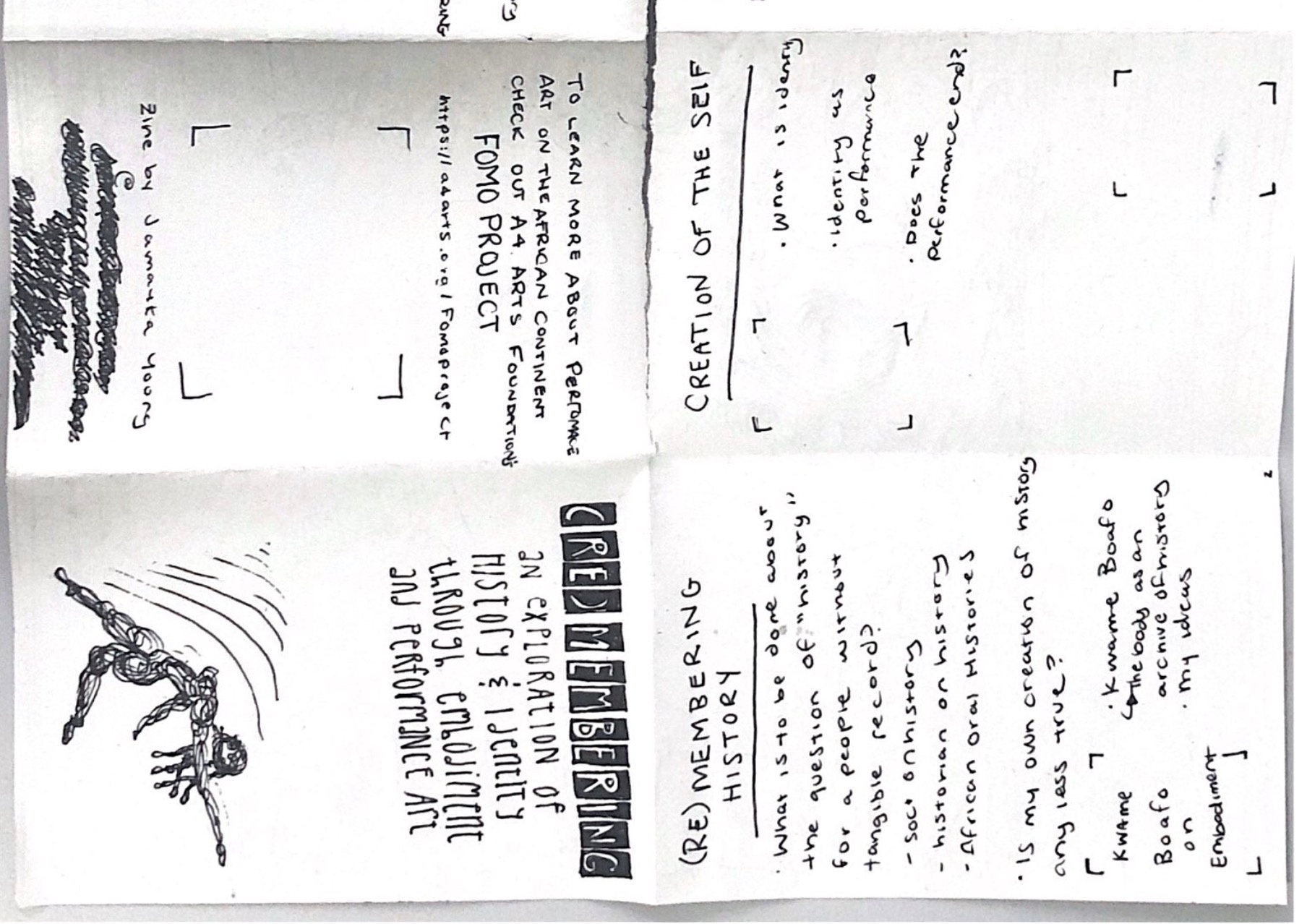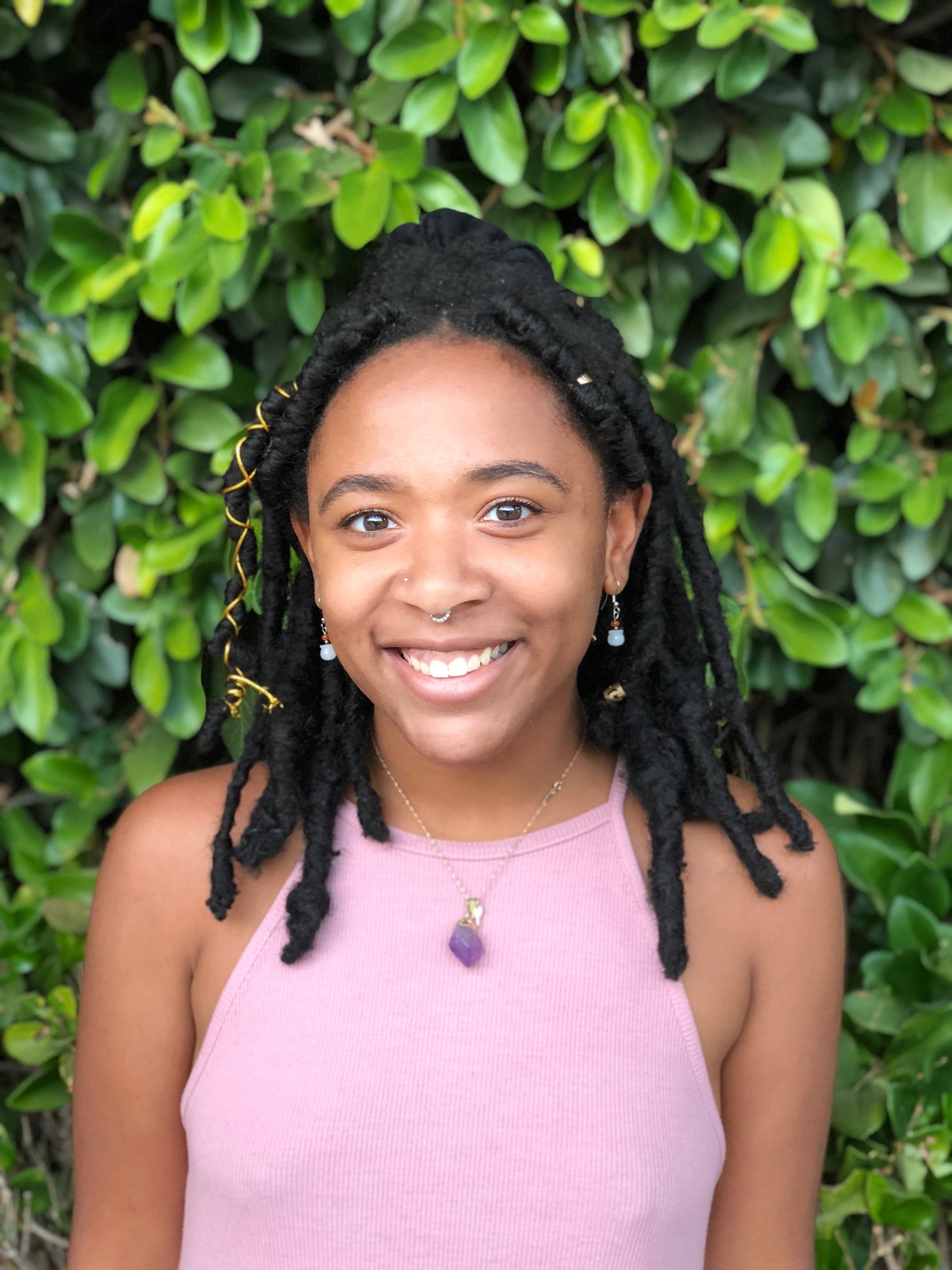
Engaged Learning Coordinator (Stanford):
Julie-Anne Lothian
Mentor:
heeten bhagat
Intern:
Jamayka Young
With thanks to Nwabisa Mayema.
Stanford University student Jamayka Young joins A4 in February. Young is a multidisciplinary artist with an interest in literary, visual, and digital art, and explores themes of Black American identity and aesthetics, sexuality, and gender through their creative work. Young worked for Stanford University’s Institute for Diversity in the Arts. Their practice is focused on ways in which art can be a tool of activism and liberation for oppressed and socially disadvantaged peoples.
Young's research at A4 culminated in the creation of a zine through which they hope to contribute to the idea of Blackness being forged through performance.

“This internship has made me engage deeply with the artistic practices surfacing and resurfacing across the continent. To understand those practices, I was made to research, in order to better understand the people behind those practices and the ideas and events that have influenced them. I have also had to contend with my own positionality as a member of the African Diaspora who is not African. This has been an interesting position to navigate from, and has influenced my own creation and recreation of both my identities and my own arts practice. I have also been given the space to explore more deeply the ways identity manifests within art, as well as the arts being the tool to create the identity, something I can take back with me to my own research at Stanford. I have particularly enjoyed the idea of art being made in places overlooked by the greater world, and how being in a ‘forgotten place’ shapes one’s identity and art, while the people and the art also shapes these places. I have also appreciated learning from my research on the ways in which the west and the continent collide in artistic spaces. While I now feel that I have a better understanding of this manifestation in southern and western Africa, I have also had the experience of better understanding the text of Saadiya Hartman’s Lose Your Mother and other important texts about the ways in which all of the Diaspora is quite similar, (but there are also some irreconcilable differences that will perpetually put my ethnic group at the outsider position of these conversations).What I hope to explore better while here at A4 are the tangible ways this art is being supported by institutions such as A4, or if there is really a way for the truly obscure and marginalised to be elevated and honoured in its entirety by any privileged institution, especially if the art is particularly confrontational and anti-establishment. This question I am constantly grappling with myself as a marginalised artist and scholar at an elite institution that my social identities and my politics are in direct opposition to. I would like a chance to see some of these tensions play out here.”